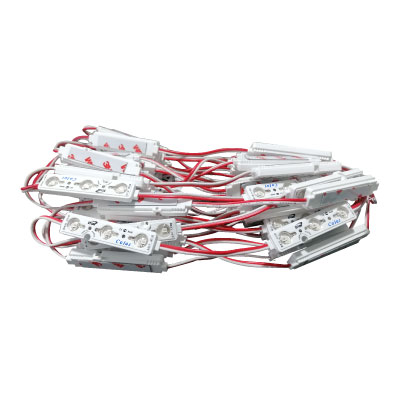In 2025, LED modules are more than just light sources—they are core technology enablers for a wide range of industries, from smart cities and automotive to agriculture and healthcare. As demand for efficient, intelligent, and customizable lighting continues to rise, LED modules have become the go-to solution for businesses seeking durability, energy efficiency, and design flexibility.
This comprehensive article explores the top applications of LED module suppliers across major sectors, highlighting how businesses are leveraging this adaptable technology to innovate, reduce costs, and enhance functionality.
What Are LED Modules?
An LED module is a self-contained unit that includes:
-
One or more LED chips
-
A PCB (Printed Circuit Board)
-
Integrated optics (lens/diffuser)
-
Drivers or regulators (in some cases)
-
Heat dissipation elements
Unlike single LED chips, LED modules are ready-to-use, making them ideal for integration into:
-
Fixtures
-
Devices
-
Equipment
-
Enclosures
Now, let’s look at the key sectors using LED modules in 2025—and how.
1. ️ Smart Cities and Urban Infrastructure
LED modules are the backbone of smart city development in 2025. City planners and municipal authorities are upgrading lighting systems to:
-
Reduce energy consumption
-
Enable remote control and automation
-
Integrate with sensors and data systems
Popular Applications:
-
Smart streetlights with motion sensors and dimming
-
Traffic signals with long-life and high visibility
-
LED information boards and digital signage
-
Public transit stops with solar-powered modules
-
Smart pole systems with cameras, Wi-Fi, and air quality sensors
Benefits:
-
Up to 60–80% energy savings
-
Real-time fault detection
-
Reduced carbon footprint
-
Enhanced urban safety
2. Industrial Lighting and Warehousing
Factories and warehouses in 2025 prioritize efficiency and safety. LED modules offer:
-
High lumen output per watt
-
Low maintenance
-
Long operating life
Common Uses:
-
High bay and low bay lighting
-
Task lighting on machinery
-
Explosion-proof fixtures in hazardous zones
-
Emergency backup lighting using DC LED modules
Benefits:
-
Better visibility in 24/7 operations
-
Reduced heat output
-
Enhanced worker safety
-
Integration with smart building systems
3. Automotive and Transportation
Modern vehicles—electric or fuel-based—are heavily reliant on LED modules for performance and aesthetics.
Applications:
-
Headlamps and tail lamps
-
Daytime running lights (DRL)
-
Turn indicators and interior ambient lighting
-
Smart adaptive beams that change with road or weather
-
Display backlighting for dashboards and infotainment
Future Trends in 2025:
-
Matrix LED headlamps for adaptive driving
-
Dynamic lighting for autonomous vehicles
-
Full-LED cockpit lighting
-
LED modules integrated with LIDAR sensors
4. Healthcare and Medical Devices
LED modules power critical applications in modern healthcare, offering:
-
Non-invasive lighting
-
Specific wavelength tuning
-
Low UV and IR emissions
Use Cases:
-
Surgical lamps with high CRI (Color Rendering Index)
-
LED phototherapy units (for skin conditions, jaundice)
-
Medical imaging devices
-
Endoscopic and dental lighting
-
Disinfection systems using UVC LEDs
Why LEDs Matter in Medicine:
-
Precise control of color and brightness
-
Long-term reliability
-
Compact form factors for portable devices
5. ️ Retail, Hospitality, and Display Lighting
The retail and hospitality sectors rely on visual appeal—and LED modules bring displays to life.
Popular Applications:
-
Shelf and cabinet lighting
-
Color-tunable modules for mood lighting
-
Spotlights in showrooms and exhibitions
-
Custom signage and illuminated logos
-
LED strip modules for architectural lines and contours
2025 Trend:
-
Integration of IoT and voice-controlled lighting
-
Use of RGBW modules to customize color palettes
-
Smart modules that adjust based on time of day or crowd density
6. Education and Office Spaces
Lighting affects mood, focus, and productivity. In 2025, LED modules in education and office buildings are:
-
Human-centric
-
Energy-efficient
-
Easy to control via apps or sensors
Use Cases:
-
Tunable white modules for circadian lighting
-
LED panels with uniform diffusion
-
Desk lighting modules with USB and sensor integration
-
Emergency lighting modules for stairways and exits
Benefits:
-
Reduced eye strain
-
Custom brightness for tasks or collaboration
-
Lower energy costs for schools and companies
7. Horticulture and Agriculture
LED modules are revolutionizing controlled-environment farming (vertical farms, greenhouses) in 2025.
Key Applications:
-
Grow light modules tuned to specific spectrums (red/blue/far red)
-
Multi-layer farming lights
-
UVC modules for sterilizing tools and surfaces
-
Photoperiod control systems
Benefits:
-
Faster growth cycles
-
Higher crop yields per square meter
-
Precise spectral tuning for plant species
-
Energy-efficient alternatives to HPS lamps
8. Smart Homes and Residential Lighting
The smart home boom continues, and LED modules are at its core.
Home Uses:
-
Ceiling and recessed downlights
-
Under-cabinet kitchen lights
-
Mirror and bathroom lights
-
RGBW modules for living room ambiance
-
Outdoor path and landscape lighting
2025 Trends:
-
Modules with Wi-Fi, Zigbee, or Bluetooth control
-
Integration with Alexa, Google Home, or Apple HomeKit
-
Smart lighting scenes based on time, presence, or voice command
9. ✈️ Aerospace and Marine Lighting
Extreme environments like aircraft cabins and ship decks require rugged LED modules.
Aerospace Uses:
-
Cabin reading lights
-
Emergency path lights
-
Instrument panel lighting
-
UV modules for air purification
Marine Uses:
-
Submersible modules for underwater lighting
-
Corrosion-resistant lighting for decks and docks
-
Navigation lights
Benefits:
-
Vibration resistance
-
Custom voltage ranges (12V/24V DC)
-
Long lifespans and easy retrofitting
10. Film, Photography, and Event Lighting
LED modules provide flicker-free, color-accurate light needed for visual production environments.
Applications:
-
Studio soft boxes and panels
-
Portable light wands and tubes
-
Backlighting for on-set monitors
-
Live event lighting with DMX-controlled RGB modules
Why LEDs Rule Here:
-
Instant-on with no warm-up
-
Low power draw for mobile use
-
Silent operation (no buzzing or ballasts)
-
Flicker-free at high frame rates (120fps+)
11. ️ Consumer Electronics and Appliances
Modern appliances and electronics rely on compact LED modules for both form and function.
Common Uses:
-
Backlit buttons and displays
-
Fridge/freezer compartment lighting
-
TV edge/backlighting
-
Gaming devices and peripherals
-
Robotic vacuums and home gadgets
2025 Trend:
-
Embedded IR/UV LED modules for gesture recognition or sterilization
-
Ultra-slim PCB modules for flexible form factors
12. Commercial Signage and Advertising
In 2025, LED modules light up the ads, logos, and billboards you see on streets and highways.
Examples:
-
Channel letter modules
-
Backlit acrylic panels
-
Outdoor digital billboards
-
Truck and mobile signage
-
Retail shopfront displays
Key Module Features:
-
High-brightness SMDs
-
IP65+ protection for outdoor use
-
Wide beam angles
-
Uniform diffusion (no hotspots)
The Future of LED Module Applications
In 2025 and beyond, we’re seeing new frontiers:
AI-Driven Lighting:
-
LED modules integrated with AI systems to adjust color, intensity, and direction based on real-time input
Health-Centric Smart Homes:
-
Modules that emit melatonin-friendly light at night and blue-enriched white light in the morning
Adaptive Transportation Lighting:
-
LED arrays that dynamically adjust based on road conditions, pedestrian presence, or camera feedback
Integrated Sensors:
-
Modules bundled with motion, air quality, light, or occupancy sensors in a single unit
✅ Summary Table: LED Module Applications by Industry
| Industry | Applications |
|---|---|
| Smart Cities | Streetlights, signage, transit, smart poles |
| Industrial | High bays, task lighting, explosion-proof modules |
| Automotive | Headlamps, DRLs, adaptive lighting, interiors |
| Medical | Surgery, diagnostics, phototherapy, UV sterilization |
| Retail & Hospitality | Mood lighting, signage, cabinet lights, displays |
| Education & Offices | Circadian lighting, LED panels, emergency exit lights |
| Agriculture | Grow lights, UV modules, spectral tuning |
| Residential | Smart ceiling lights, landscape, ambiance modules |
| Aerospace & Marine | Path lighting, corrosion-resistant modules, submersibles |
| Film & Events | Flicker-free modules, RGB panels, portable lighting |
| Consumer Devices | Backlit panels, buttons, smart gadgets |
| Signage & Advertising | LED letter modules, lightboxes, digital boards |
Conclusion: A Modular Future for Every Industry
LED modules in 2025 are more than just a lighting trend—they are critical components enabling smarter, greener, and more adaptive technologies. Their integration spans across industries and use cases, supporting both mass manufacturing and custom innovations.
Whether you’re sourcing for horticulture, automotive, signage, or smart homes, the right LED module unlocks efficiency, longevity, and functionality. Understanding the breadth of these applications helps you make informed choices, avoid mistakes, and stay ahead of your competition.




